A Guide to Seattle Home Styles – And How They Shape Remodeling Possibilities
June 26, 2025
Seattle home styles vary widely across the city, and sometimes even from house to house on the same block. This architectural diversity reflects Seattle’s unique blend of history, growth, and neighborhood character, shaped by everything from early streetcar suburbs to modern infill development.
When planning a remodel or addition, the architectural style of your home can influence what makes the most sense, both aesthetically and structurally. Whether you live in a century-old Craftsman, or a recently build modern home, understanding its design roots and what makes your home distinctive is a great first step. Below we’ll take a look at the history of Seattle homes and explore some of Seattle’s most common residential styles.
A Brief History of Seattle Homebuilding
Very early Seattle area homes initially took their inspiration from indigenous peoples’ long houses – homes were built with wood, the most prevalent and available resource for homesteading. Small, log cabins were built by early white settlers beginning in the mid 1800s, but after the arrival of the Northern Pacific Railroad in 1884, Seattle began to boom and with that, more displays of wealth were exhibited in complicated and ornate Victorian Gothic homes built by prominent families.
After the Great Fire on June 6, 1889, and the Depression of 1893, the Yukon gold rush ushered in another housing boom, and with it a plethora of housing styles. The next decade saw the construction of a variety of styles including Romanesque, Gothic, French, Georgian, and Italian Renaissance. Because of the concentrated growth in the late 19th and early 20th centuries, Seattle saw a fairly balanced representation of styles and around the turn of the century there was a renewed interest in traditional styles like Colonial Revival, Classic Revival, and Tudor Revival. The Foursquare style also became popular in Seattle after 1900, and the Seattle version, known as the Classic Box or Seattle Box, included corner bay windows, usually on the second floor.
As mansions were built on Capitol Hill and Queen Anne, more affordable homes were being constructed in other parts of Seattle in the Craftsman bungalow style home. The Craftsman style emerged from the British Arts and Crafts movement, a late-nineteenth-century reaction to the Industrial Revolution. Its style emphasized handcrafted details, natural materials, and a connection to nature, contrasting with the ornate Victorian styles of the time. Many were even built using mail-order kits or plans from magazines and catalogs, making homeownership widely available and affordable to Seattle residents.
Modern homes became more popular as housing forms moved away from traditional European styles, and into a more simple, “form follows function” style of architecture featuring flat or hipped roofs, horizontal planes, and open floor plans. Modern architecture was quickly accepted in the Pacific Northwest post-World War II, as the style blended with the natural beauty of landscape.
Condominiums and townhouses began appearing in the early 1970s, along with other multi-family dwellings, further diversifying the architecture in Seattle’s cherished neighborhoods.
Below is a breakdown of Seattle home styles seen across the city today.
Craftsman
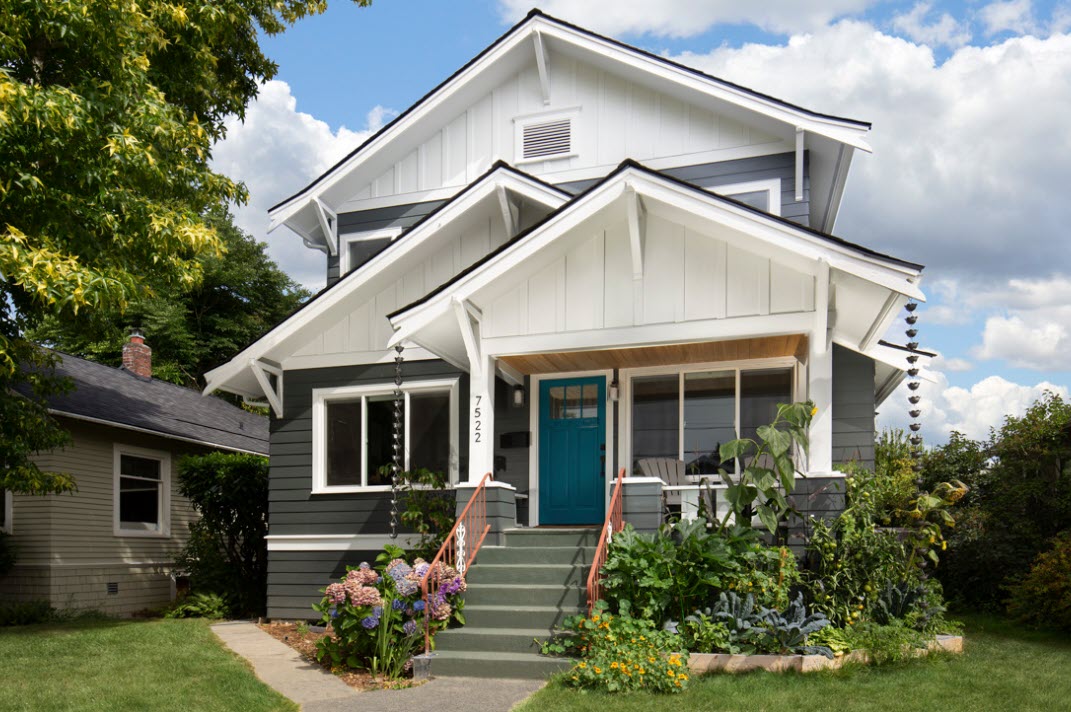
Originating in the early 20th century, Craftsman homes became popular due to the style’s emphasis on natural materials such as wood and stone – resources prevalently available in the Pacific Northwest. Craftsman homes feature a wide, low-pitched gable or a hipped roof with wide eaves, exposed rafters and triangular brackets. Residents are greeted with a porch that typically features massive columns at the entrance. Inside are functional and simple forms with a flexible, open floor plan, often with built-in bookcases and window seats.
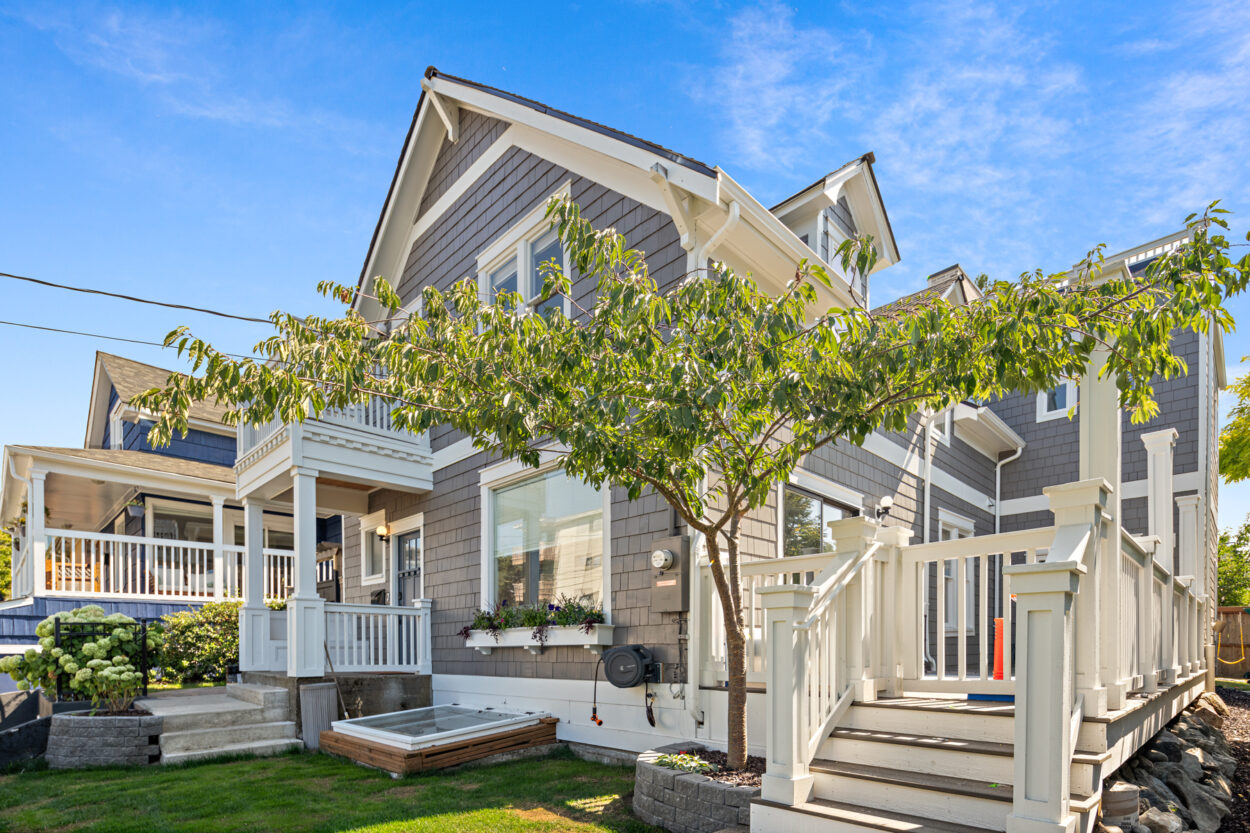
Tudor Revival
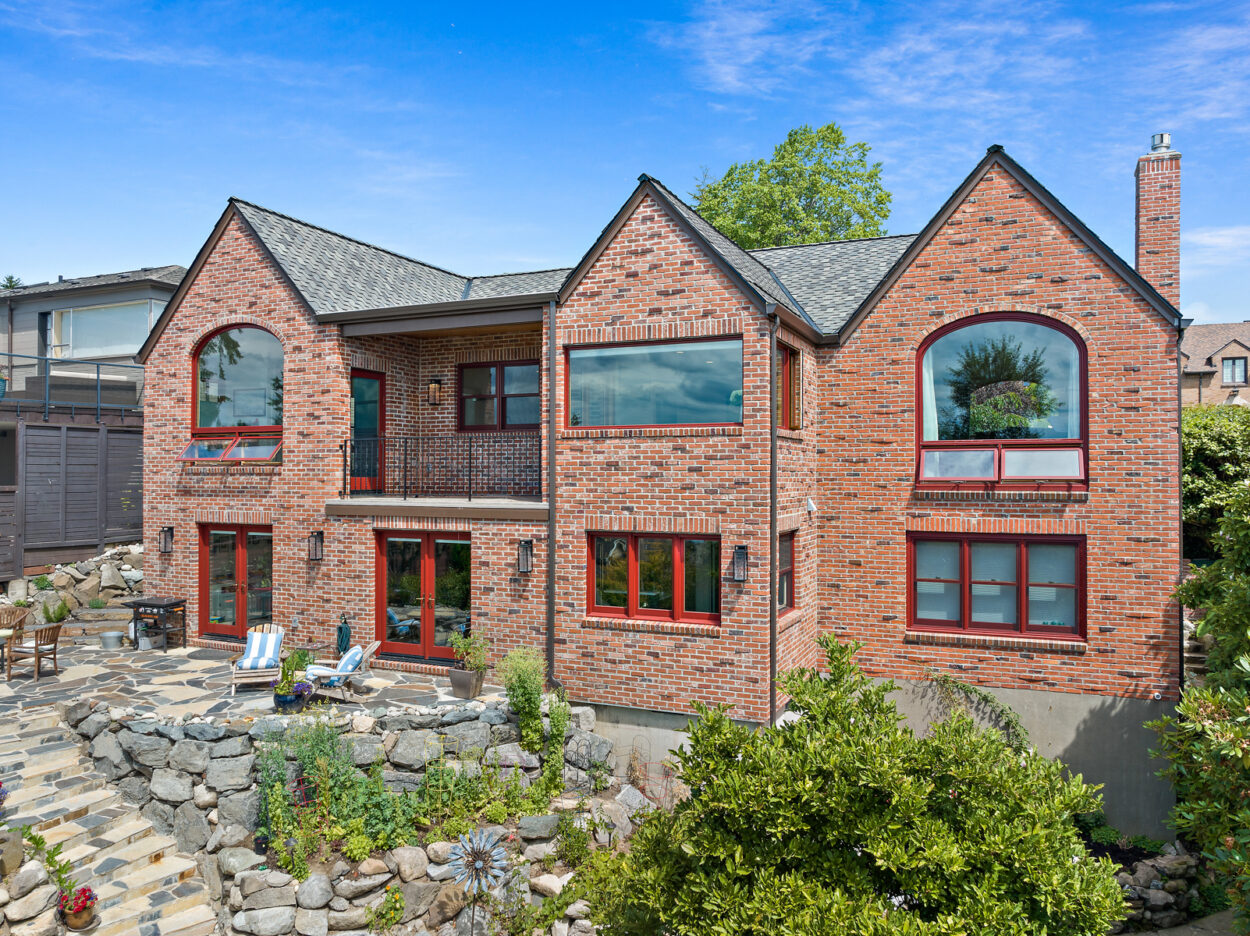
One of the more instantly recognizable home styles is Tudor Revival, originally rooted in 15th and 16th century England, during the reign of the House of Tudor, the exteriors feature steeply pitched roofs, often with cross gables, giving the home a distinct profile. Decorative half-timbering is a trademark of the style, featuring a combination of exposed wood framework over masonry or stucco. You will also notice prominent chimneys, as well as board and batten doors and warm earthy tones such as rich browns, creams, and brick red. These homes typically have multiple panes, often grouped together in tall, narrow windows. Brick and stone are commonly used on the exterior, but as seen below, this Ballard Contemporary Tudor Revival remodel utilizes more modern materials such as cladding along with a more modern color scheme.
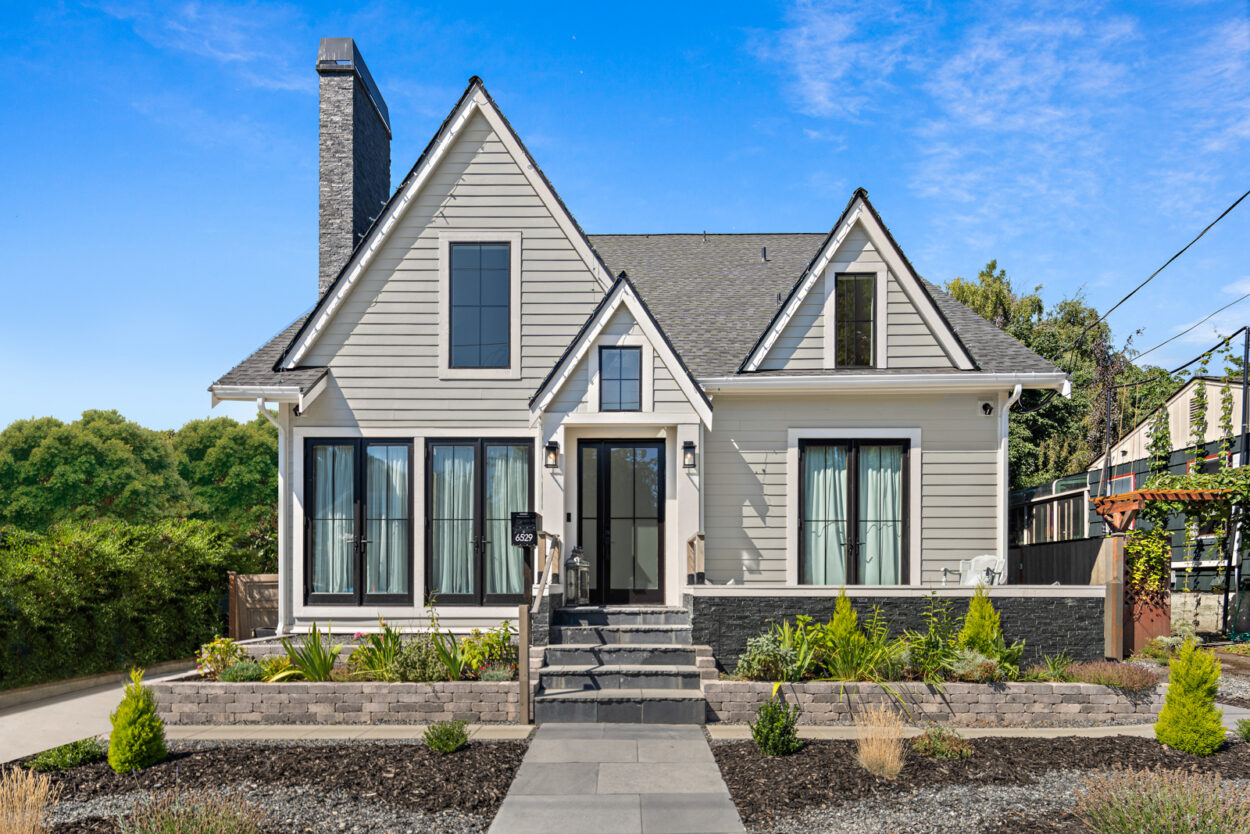
Modern/Contemporary
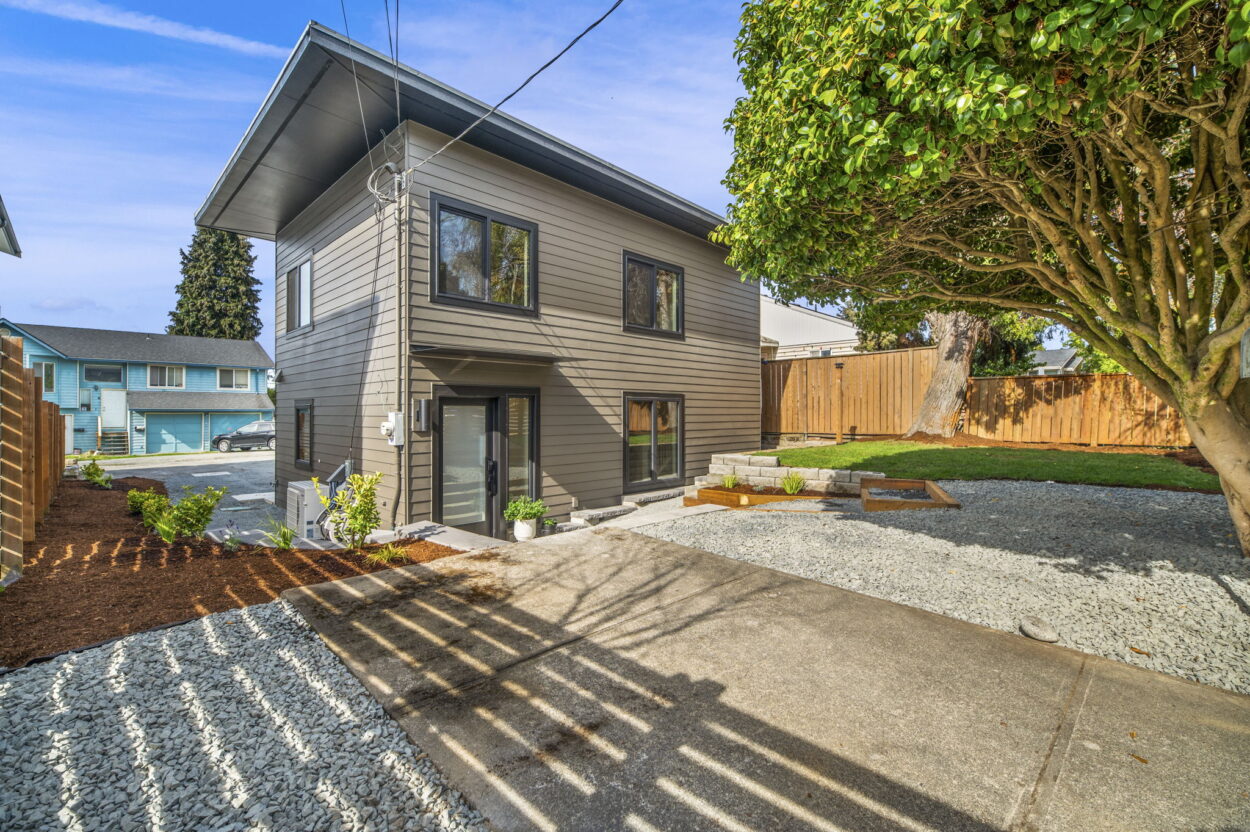
Modern styles blend natural materials with modern design and architecture, often featuring clean lines, flat planes, and extensive uses of glass to aid in dissolving the boundaries between indoor and outdoor spaces. Sometimes, these homes feature asymmetrical exteriors as well. Interiors feature open floor plans and minimal ornamentation, with an emphasis on functionality and simplicity.
Contemporary homes also embrace many of the characteristics of modern homes, but with an emphasis on advanced, eco-friendly technologies and sustainable materials. Wood, steel, and glass exteriors blend with minimal interiors focusing on space, light and function.
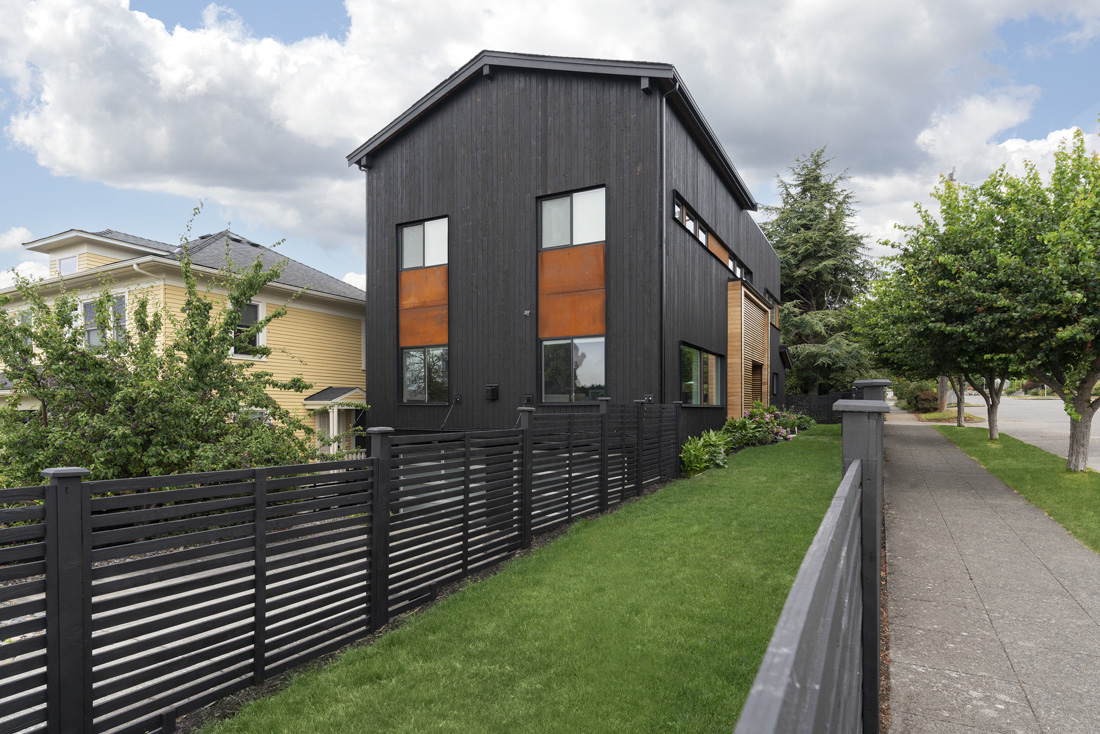
The photo above is a great example of a Modern/Northwest Contemporary hybrid. The Pacific Northwest has some of the most beautiful geography in the world, and the Pacific Northwest Contemporary style attempts to complement and enhance those features. It blends the region’s natural materials with modern design and architecture, integrating into the surrounding geography while delivering a fully functional and efficient living experience. You’ll find flat or low-pitched roofs, with wide eaves, large expansive windows that flood interiors with natural light while simultaneously framing the outdoors from the interior. These homes will commonly utilize local materials, stone, glass, and wood (like cedar and Douglas fir) to tie into the elements. Interiors boast open floor plans that allow for seamless spaces as well as natural materials like exposed wooden beams and stone accents.
Ranch
The Ranch Style, also known as a “rambler,” home, grew in popularity during the 1950s/60s, and is still fairly popular today as it features a simple, single-story floor plan, often with an open layout and occasionally include a basement. It typically has an attached garage and a low-pitched roof, with large windows and sliding glass doors, encouraging an indoor-outdoor living style.
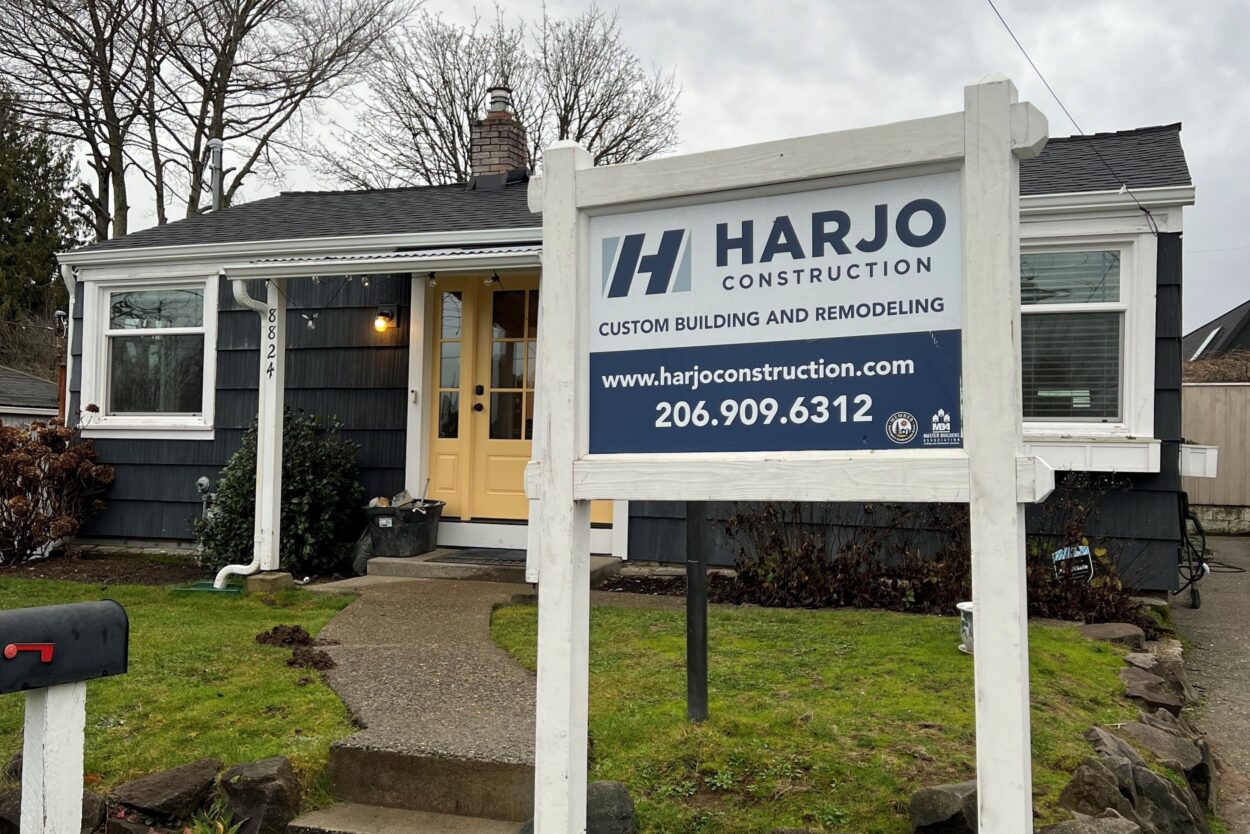
Cape Cod
With roots dating back to 1675, and also commonly found in the New England area, the quaint and charming Cape Cod-style houses are reminiscent of the classic American cottage style and fit in well with the PNW area. This type of home design migrated from England to the United States, maintaining its symmetrical design and central chimney. Cape Cod house styles feature a steep roof to keep snow from accumulating, dormer windows for added light, wood siding and shutters to keep the heat in, and hardwood floors for comfort and practicality.
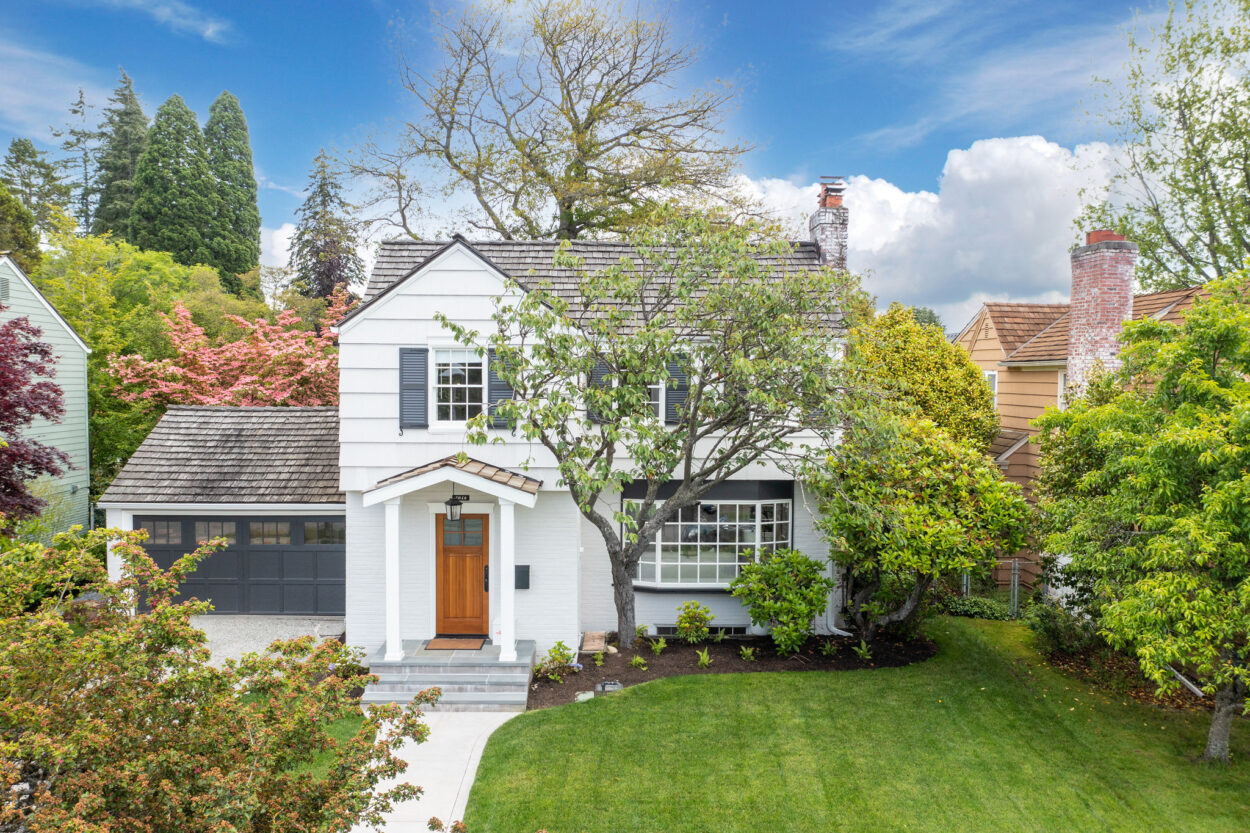
Victorian/Queen Anne
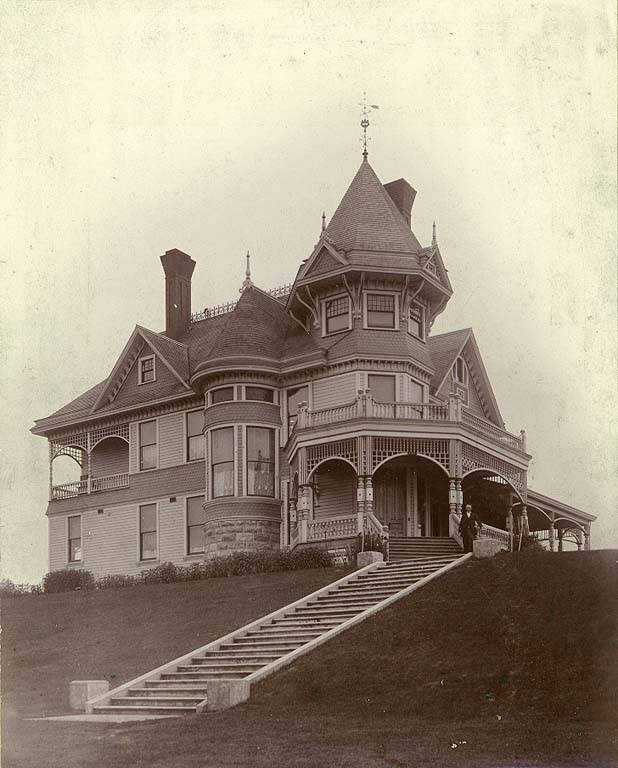
Victorian-style houses were first seen during the Victorian Era, from around 1860 to 1900. Victorian-style houses flaunt elaborate detailing in just about every part of the home, from the intricate wood trim, ornate staircases, stained glass, and decorative woodwork. They have steep gabled roofs, a front-facing gable, patterned shingles, bay windows, a round tower, and a front porch. Victorians celebrate intricacy, grandeur, and the opulence of the industrial age.
Foursquare/Seattle Box
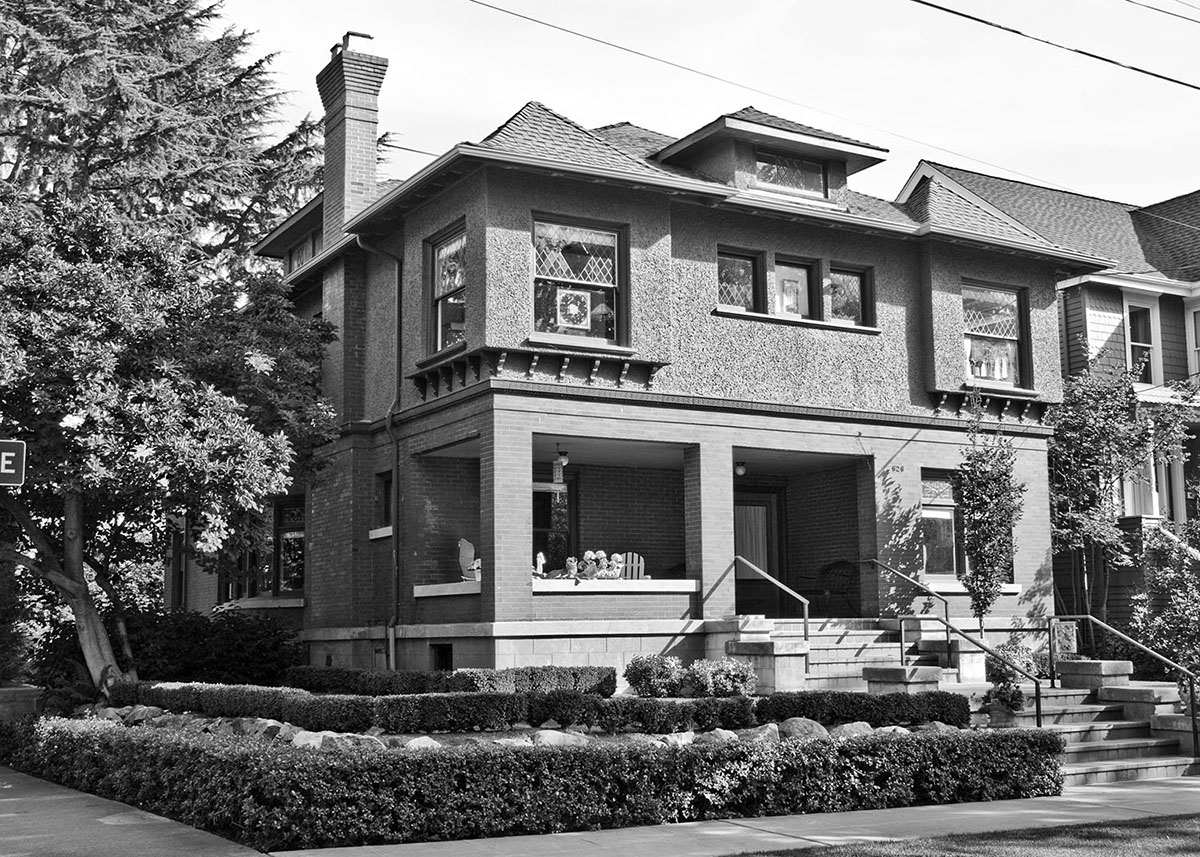
The Seattle Box, commonly known as the Foursquare, is an architectural style that embodies practicality with the timeless charm of the early 20th century. Popularized in the early 1900s, the Seattle Box emerged as a response to the city’s rapid urban growth and the need for efficient residential design. It features a simple “boxy” shape, typically two-and-a-half stores tall with hipped or pyramidal roof with wide overhanging eaves over a large porch. The exterior has a symmetrical façade, often with a central dormer. They have a spacious layout, built-in cabinets, shelves and benches for efficient use of space of the four rooms on each floor, hence the “Foursquare” name.
Mid-Century Modern

Part of the modernism movement, mid-century modern homes feature clean lines and floor-to-celling windows, open and minimalist layouts, and a mix of natural and manufactured materials for the interior elements like wood, stone, steel and plastic.
Remodeling These Home Styles
Remodeling in Seattle isn’t only about adding square footage or fresh finishes, it’s about working with your home’s architecture to enhance both livability and long-term value. Whether you’re opening up a kitchen, reimagining a bathroom, or planning a larger addition, understanding the style of your home can help guide thoughtful design choices that feel cohesive and intentional.
In many cases, blending original architectural details with modern updates leads to the most timeless results. Respecting the bones of a Craftsman or Tudor, for example, doesn’t mean sacrificing function or creativity, it means enhancing what makes your home distinctive while making it work beautifully for the way you live today.
Our Experience
As a design-build firm with deep experience remodeling homes across Seattle’s historic neighborhoods, we’ve worked with nearly every architectural style the city has to offer. We believe great remodeling begins with understanding a home’s past, and helping homeowners shape its future. If you’re thinking about how to make your home work better for your daily life, we’d love to help! Schedule a consultation to start the conversation.